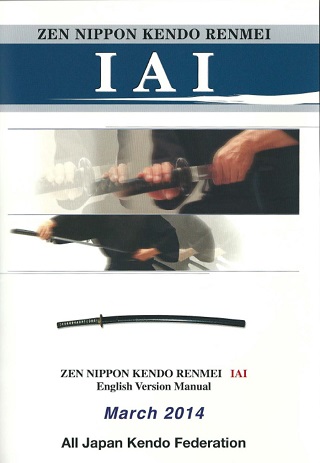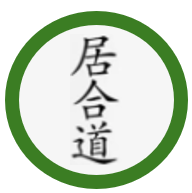ABOUT
Welcome to the ZNKR Iai interactive web application
To better understand the practice of Iaidō, this web application, accessible to everyone and from everywhere, is multi-support (pc, smartphone) and if you forget the PDF manual in your sports bag, you can consult, revise, quickly find the instructions and recommendations of the ZNKR Iai online in a few clicks, at any time and from anywhere.
Consultation is made easier by the menu structure and the use of standard smartphone navigation functions.
Now navigate the ZNKR Iai on your smartphone using simple gestures, and quickly move from kata to kata with your finger on the screen without pausing.
Swipe, scroll, or swipe the home screen left or right, and select the kata of your choice.
Happy browsing!
🙂
Download this booklet if you wish to print it.
 Download
Download
FOREWORD
English version Manual - March 2014
Different translations of this manual exist. We believe it is important to clarify that, while they strive to be as accurate as possible with the original Japanese manual of the current year, although the syntax may differ, they all point to the same experience and are therefore complementary rather than contradictory.
Particular attention should be paid to the date of the publication of the manual consulted. Each year, a group of high-ranking Japanese experts gathers together and updates this manual, concluding with a revised and corrected edition. Western translations are now old and contain instructions that have evolved, yet require immediate application in the execution of movements and katas. We are doing our best to bring you these elements following the comments of Japanese teachers during their recent visits to France, Europe, and also trips to Japan (2023).
A new translation work from Japanese to English of the official ZNKR manual seems truly necessary to us, but qualified resources to do so are scarce.
It is therefore up to teachers, through their research, experience, and participation in training sessions with Japanese teachers, to convey these developments to their students, as well as the convergence of the different editions, provided they are up to date.
It should also be considered that the manual helps the student and cannot stand alone; The oral transmission of instructions from a qualified teacher is essential and will bring them to life.
Here you will find a translation that is as faithful as possible, without being definitive or authoritative, and containing the latest Japanese instructions and clarifications.
Readers seeking the original text and wishing to interpret it themselves should refer to the latest version of the Japanese textbook, as there is currently no perfect translation, let alone an up-to-date one.
Books in Japanese or English are available from the AJKF.
Website: http://www.kendo.or.jp
FOREWORD
Preliminary statement
Kendo and Iaido are closely related arising out of the origin of the Japanese sword. People who do Ken do often refer to the handling of the sword, the spirit as well as Batto (drawing the sword) or Noto (replacing the sword) of Iaido. Kendo practitioners are sometimes asked if they also practice Iaido. If their answer is negative, then people might think this is curious as Kendo and Iai go hand in hand and can be taken for granted that people who practice Kendo can also perform Iaido and vice versa.
By performing Iaido with "real" swords, Kendo practitioners can soften any criticism that they only twirl bamboo swords.
There are many Iaido schools and many forms or Kata, so it is very diflicult to master all of them. So from these we chose the basic techniques from each school and put them together so that people could easily learn laido and popularize it.
It is my great pleasure to offer you this book after long discussion and consideration and to be able to show the demonstration of Iaido according to this book in 1968 in Kyoto. I hope that people who do Ken do can at least master what is written in this book.
The masters who established ZEN KEN REN IAIDO GATA think this is nn important manual for those studying the basics of Iaido. Iaido has deep one! recondite phases. I recommend you to pursue more in the future.
May 1969 - ALL JAPAN KENDO FEDERATION
Administrative Director : Kasuo OTANI
Revision of ZEN NIPPON KENDO RENMEI IAI Book
The first Zen Nippon Kendo Renmei Iaido instruction manual was compiled in 1969.
In 1976 part of it was revised and in 1980 three new forms were added. Since then Iaido has been performed all over the world. Translation into ot her languages was considered, but we encountered some misprinting and inappropriate words. We also think some sentences are difficult to understand or imagine and accordingly have hindered the translation in using it as a guide.
The Zen Nippon Kendo Renmei Iaido Committee supplemented this book after much further study and discussion. This revised edition has been written in an easier to understand style. It also gives the unified opinion of lhe Zen Nippon Kendo Renmei concerning refereeing and grading.
I hope that this book will be helpful to the training and further growth and popularization of Iaido for practitioners everywhere.
September 1988 - ALL JAPAN KENDO FEDERATION
Executive Managing Director : Yoshimitsu TAKEYASU
Explanation for adding Katas 11 & 12 to ZNKR Iai
Iaido has become more and more popular since the Japanese version of this book was compiled in 1969.
At the turn of the 21st century we decided to add two new forms to improve the balance and let more people enjoy All Japan Kendo Federation Iaido.
In order to improve Iaido you should not only master the handling of the sword and breathing, but also the unification of heart, spirit and power.
I hope that Iaido will be enjoyed by people who practice Kendo and it proves more rewarding and fruitful to practice both together.
My wish for this book is that it helps all Kendo and Iaido practitioners throughout the world.
November 2001 - ALL JAPAN KENDO FEDERATION
President : Yoshimitsu TAKEYASU
Points from the 45th Central Iaido Seminar
In September 2018, the ZNKR IAIDO BU held its annual central seminar in Kyoto, which was attended by representatives from each prefecture.
The Kanagawa delegation, consisting of FURUICHI sensei, KIYOTA sensei, and KUBO sensei, explained the three points that were covered during the morning of today's seminar, with NAKADA sensei demonstrating.
The afternoon was devoted to incorporating them into our practice.
I believe that iaidoka outside Japan will find this useful, so I will briefly explain as best I can what was communicated to us.
However, I would first like to point out that these are not new points or changes in the Seitei gata, but rather points (blue insert in the booklet) that do not are not really taught correctly, or emphasized enough, and are therefore missing from most people's practice.
September 16, 2018 - NOMADICBUDOKA
